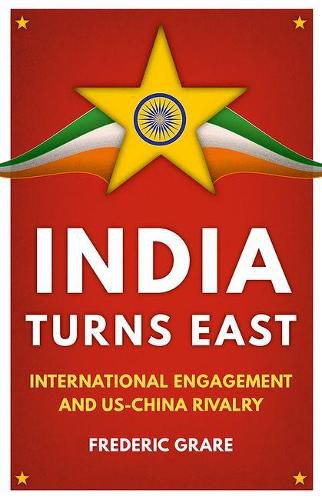Readings Newsletter
Become a Readings Member to make your shopping experience even easier.
Sign in or sign up for free!
You’re not far away from qualifying for FREE standard shipping within Australia
You’ve qualified for FREE standard shipping within Australia
The cart is loading…






India Turns East tells the story of India’s long and difficult journey to reclaim its status in a rapidly changing Asian environment increasingly shaped by the US-China rivalry and the uncertainties of US commitment to Asia’s security. The Look East policy initially aimed at reconnecting India with Asia’s economic globalisation. As China became more assertive, Look East rapidly evolved into a comprehensive strategy with political and military dimensions. Frederic Grare argues that, despite this rapprochement, the congruence of Indian and US objectives regarding China is not absolute. The two countries share similar concerns, but differ in their tactics as well as their thoughts about the role China should play in the emerging regional architecture. Moreover, though bilateral US policies are usually perceived positively in New Delhi, paradoxically, the multilateral dimensions of the US Rebalance to Asia policy sometimes pushes New Delhi closer to Beijing’s positions than to Washington’s. This important new book explores some of the possible ways out of India’s ‘Eastern’ dilemma.
$9.00 standard shipping within Australia
FREE standard shipping within Australia for orders over $100.00
Express & International shipping calculated at checkout
India Turns East tells the story of India’s long and difficult journey to reclaim its status in a rapidly changing Asian environment increasingly shaped by the US-China rivalry and the uncertainties of US commitment to Asia’s security. The Look East policy initially aimed at reconnecting India with Asia’s economic globalisation. As China became more assertive, Look East rapidly evolved into a comprehensive strategy with political and military dimensions. Frederic Grare argues that, despite this rapprochement, the congruence of Indian and US objectives regarding China is not absolute. The two countries share similar concerns, but differ in their tactics as well as their thoughts about the role China should play in the emerging regional architecture. Moreover, though bilateral US policies are usually perceived positively in New Delhi, paradoxically, the multilateral dimensions of the US Rebalance to Asia policy sometimes pushes New Delhi closer to Beijing’s positions than to Washington’s. This important new book explores some of the possible ways out of India’s ‘Eastern’ dilemma.